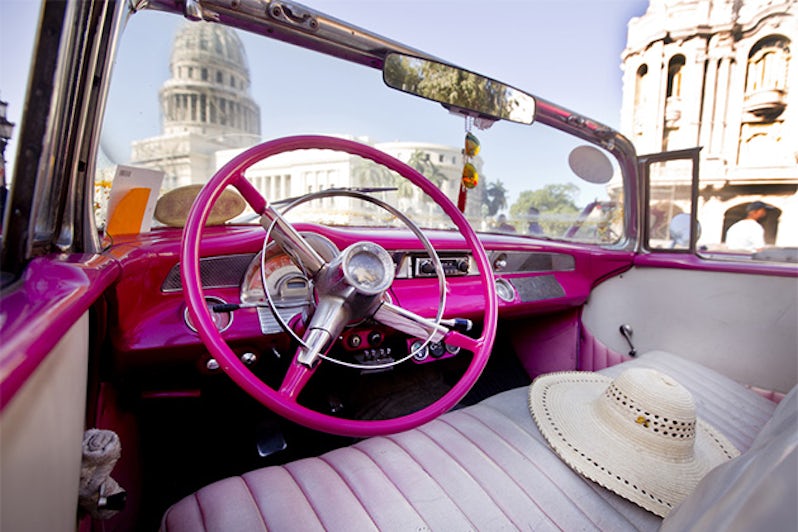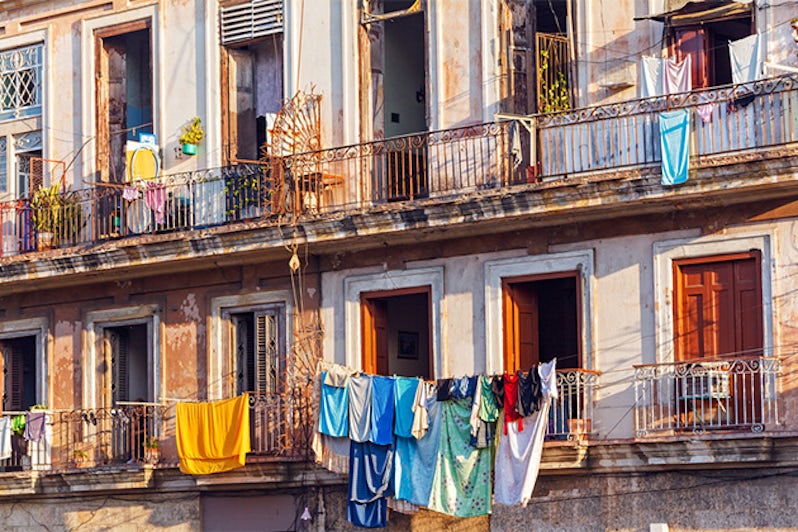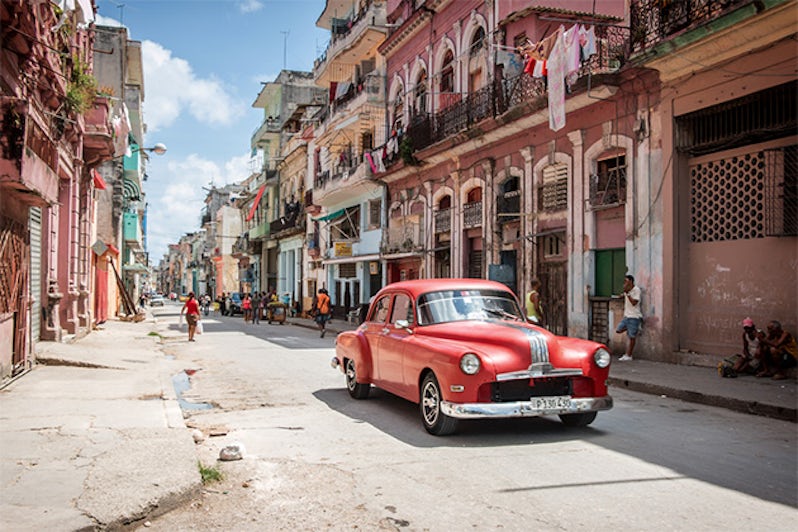8 Things Not to Do on a Cruise to Cuba


Editor's Note: Effective June 5, 2019, Americans are no longer permitted to travel to Cuba by cruise ship due to U.S. government policy changes.
Cuba is a cultural and political enigma, making it one of the most fascinating countries you might ever visit. In the 1920s, Cuba experienced a tourism boom that made Havana the most visited city in the Caribbean but since Fidel Castro's revolution of the 1950s the country has been in a long period of isolation from the United States. Today it's a worn down country, with signs of neglect everywhere and yet, you can still see signs of its former heyday.
Since the loosening of restrictions on travel to Cuba enacted last year, every major cruise line has added the island country to its Caribbean itineraries. But because of its long isolation, one of the challenges of planning Cuba cruise excursions is a lack of reliable information. Cruise Critic reached out to an expert who served as a guide on the first round of Cuba cruises offered by now-defunct Fathom Cruises to help you avoid the rookie mistakes he's seen others make.
If your goal is to save money and see as much as possible during your limited time in Cuba, here are eight things you'll definitely want to avoid.
1. Don't bring USD.
Because of the U.S. trade embargo, debit and credit cards from the United States won't work in Cuba, making it a country where cash is still king, so once you get there, you'll need to get CUCs (Cuban convertible pesos, pronounced kooks). There's an extra 13 percent fee for exchanging U.S. dollars, so bring euros, pounds or Canadian dollars instead. While some Cuban businesses may accept USD, it's costly for them to exchange it back to their own currency, so it's much more considerate to pay and tip in CUC. Even though the cruise terminal has multiple exchange booths, the volume of passengers getting off at the same time can occasionally create a long line to exchange money. To maximize your time in Havana, already have some Cuban currency so you can start your day immediately. On the ship, ask your cabin steward or server if they have any extra CUCs that they'd be willing to exchange with you. And, in addition to the cruise terminal, you can exchange money at the San Jose Artisans' Market down the street from the terminal, and at most hotels.
2. Do not take photos or videos of people without asking permission and tipping after.
If you pass a cute little grandma sitting on a bench smoking a cigar and you want to take her picture, ask for permission first and then give her a tip after. In the Plazas of Old Havana and Parque Central, elaborately costumed Cubans will pose for pictures. Musicians will serenade you. Artists will sketch you and hand you the drawing. They all expect a tip; 1 to 3 CUCs will do. One of the most common complaints about Havana has to do with the jineteros, street hustlers who may act friendly at first, but whose true agenda is to make money off you. These hustlers will often try to pass themselves off as musicians or street artists. Make your boundaries clear from the beginning and respectfully but firmly decline any services you are not interested in by saying, "No, gracias" and walking away.

3. Don't forget to bring toilet paper and a large water bottle with you when getting off the ship.
In Cuba, hygiene and bathroom products are hard to come by. Most public bathrooms, including the ones at the cruise terminal, have an attendant who is responsible for cleaning and restocking the bathroom. He or she expects a 0.50 CUC coin as a tip. In exchange, he or she will hand you a few pieces of toilet paper. Some bathrooms don't even have an attendant, so as a precaution, carry some toilet paper and hand sanitizer with you just in case. As far as drinking water goes, Cuba is hot, and you need to stay hydrated. It's unsafe to drink the tap water, so your best bet is to have bottled water with you at all times. If you don't want to purchase bottled water from your cruise ship, consider bringing along a refillable bottle, which you can fill with ice and water from the ship before disembarking.
4. Do not ask controversial questions.
It's inappropriate to confront Cubans about their personal political views upon meeting them. While you might have good intentions, direct questions (Are you a communist?) create an uncomfortable dynamic. Broad, open-ended questions (What was life like for your parents?) give Cubans a chance to reveal on their own terms. To make for more interesting and informed conversations with locals, do some research before you get to Cuba. Watch Cuban films like "Havana Blues" and "Una Noche," read books like "Waiting for Snow in Havana" and "Telex from Cuba," and most importantly, remember that just like anywhere else in the world, opinions are not universally shared.
5. Don't expect accessibility.
The majority of Havana was built before the 1960s and most buildings haven't seen much upkeep since. Elevators, escalators and ramps are rare. Navigating the city's uneven streets by wheelchair or scooter can be challenging without a strong companion to assist. Additionally, there are not always stop signs or streetlights, so use caution when crossing any intersection. If you move a little slower and are wondering how to plan your day, consider starting out with a taxi tour, building in a long break for lunch and exploring Old Havana in the late afternoon when it's less crowded.
6. Don't skip the Tropicana.
If you only have one night in Havana, do not miss this show. Despite its larger-than-life reputation and relatively expensive ticket, you will not be disappointed by the gigantic cast of singers, dancers and musicians performing in this theater under the stars. However, you'll be sitting outside, so dress accordingly, but neatly -- no shorts, tank tops, etc. If it's raining, the show moves inside to a chilly, air-conditioned theater, so bring a jacket or sweater if the skies are gray. To save a little money, skip the cruise offering and go on your own; ticket packages are 70 to 90 CUCs, depending on your seat but an unobstructed view is worth the extra cost. The package also includes Champagne and a bottle of rum. A 40-minute taxi ride there and back, depending on where you are coming from, should cost around 30 CUCs each way. The show starts at 10 p.m. nightly, but arrive by 9 to get a good spot. Reservations can be made at tourist hotspots and hotels throughout the city.

7. Don't be afraid to explore on your own.
Cuba is extremely safe, and we recommend building in some time away from the cruise ship crowds to immerse in the local culture. Though most people don't speak English, those who work in the tourism industry will know, at the very least, some basic English. Still, speaking or understanding Spanish will make getting around easier. No matter your ability, preparation can't hurt. Look into where you might want to go before you travel, and brush up on basic Spanish vocabulary.
8. Finally, don't get overly attached to your plans.
Traveling in Cuba can be unpredictable, so don't be surprised if your plans (or the cruise line's excursion) has to change. There could be a random power outage, a national holiday you didn't know about or something just closed for no discernible reason. That's life in Cuba, so relax, have fun and go with the flow.